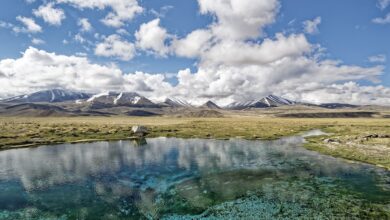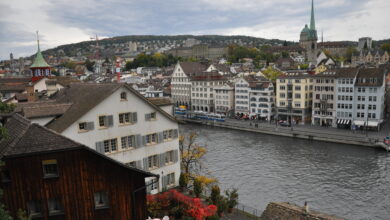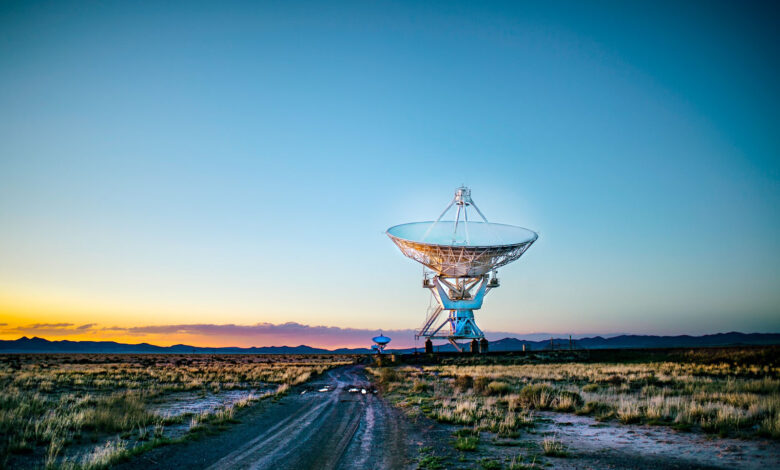
[ad_1]
Heads up: some of the links on this site are affiliate links. If you click and make a booking or purchase, I’ll make a commission (at no extra cost to you). I partner with companies I personally use and the $$ goes towards creating more awesome, free travel content.
New Mexico isn’t usually the first place people think of when they think of destinations to visit in the United States. Yet the state has a very unique landscape and culture, with lots of cool and interesting attractions to keep you occupied. From artsy towns and pueblo communities to hot springs and award-winning restaurants, New Mexico has a lot of things going for it.
I loved my time in New Mexico and it’s one of the best places I’ve visited in the US. I spent 3 days in Santa Fe, soaked in some hot springs and drove the scenic byway from Santa Fe to Taos. It was an incredible trip and I wouldn’t hesitate to recommend New Mexico for a weekend break or longer trip.
So what is New Mexico known for? Here’s a list of all the unique things that Mexico is famous for.
Taos Pueblo
New Mexico is home to Taos Pueblo, which is one of the oldest continuously inhabited communities in the United States. Located 1 mile north of Taos, this living Native American community is over 1000 years old and has been designated a UNESCO World Heritage Site.
The pueblo is constructed entirely of adobe and the exterior surfaces are maintained by regularly replastering with thick layers of mud. Around 150 people live in Taos Pueblo full time, while others live in summer houses near the fields, or in properties outside the walls but still on pueblo land.
Visitors can tour the pueblo between the hours of 8am to 4.30pm, except on days of community events and other ceremonies.
Santa Fe
Santa Fe is the capital of New Mexico and sits in the Sangre de Cristo foothills. The city is known for its fine art scene and adorable old town filled with adobe buildings and restaurants. Top attractions in Santa Fe include the Palace of the Governors, Santa Fe plaza, Loretto Chapel and New Mexico Museum of Art.
Outside the old town you also have Canyon Road, which is filled with art galleries, and Museum Hill, which is home to four museums and a botanical garden.
Hot Springs
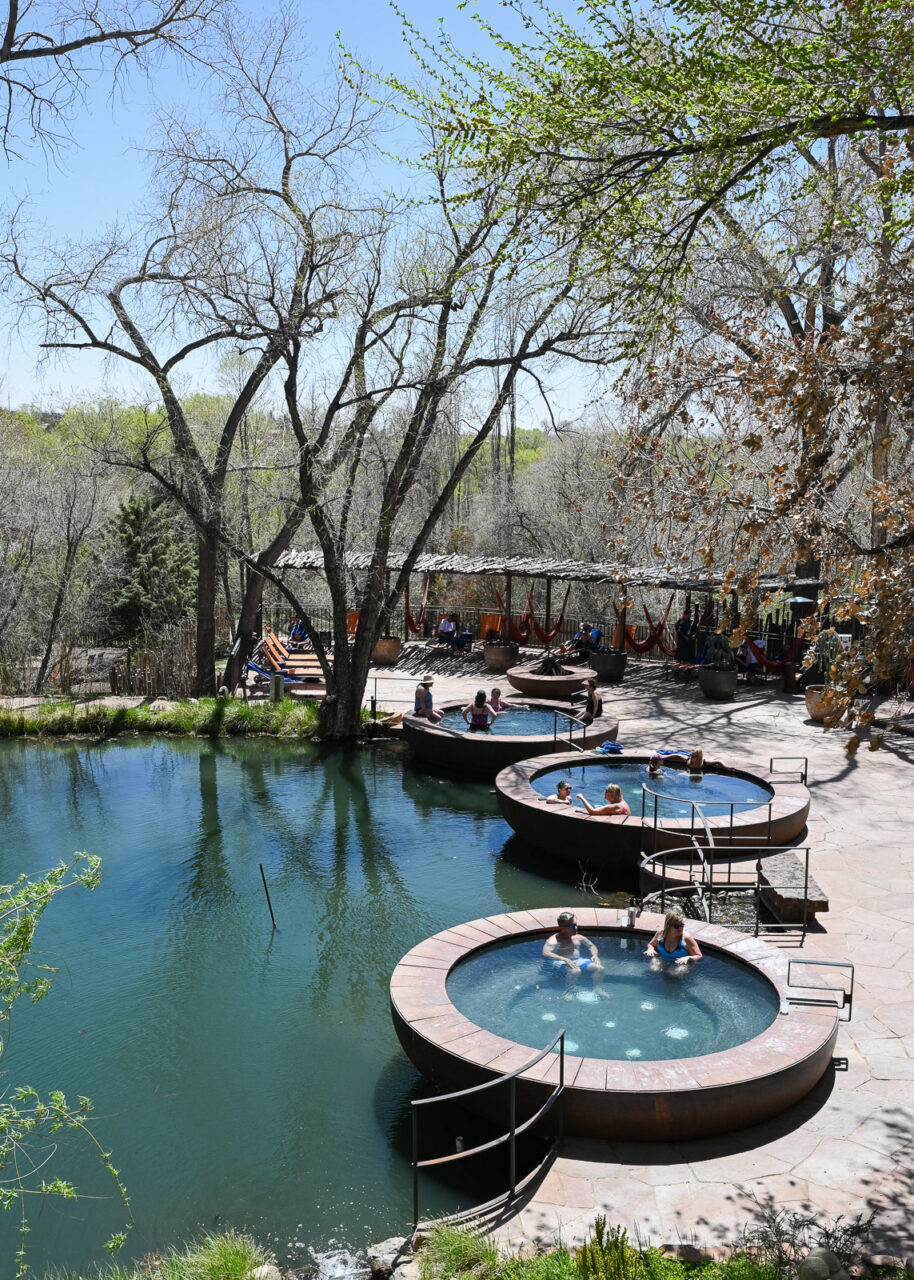
Due to geothermal activity in the region, there are lots of hot springs in New Mexico, including natural springs and resort-style spas.
Located about 60 miles north of Albuquerque near Valles Caldera National Preserve, Jemez Springs is home to several cultivated springs, including Jemez Hot Springs and Jemez Springs Bath House.
The state capital of Santa Fe also has two incredible spas where you can soak your body in mineral rich waters. Ten Thousand Waves is a Japanese-style onsen with an izakaya restaurant, while Ojo Santa Fe Spa Resort is a resort-style spa with spring-fed thermal pools and 77 acres of lush gardens.
If you’d prefer to be at one with nature and soak in a natural hot spring, hop in your car and pay a visit to San Antonio Hot Springs, Spence Hot Springs or McCauley Warm Springs. Check out my article on the best hot springs near Santa Fe to discover all the best places for soaking.
Ristras
All over New Mexico’s towns and cities you’ll see Ristras hanging from doorways, portals trees. Ristras are strings of dried chiles that are used for decoration but are also meant to bring good health and good luck.
Fine Art
Santa Fe’s art market is the third largest after New York and Los Angeles. There are many fine art galleries throughout the city selling everything from western paintings and sculptures to contemporary masterpieces.
Most galleries are concentrated around Canyon Road, which is located just east of the Old Town and is the perfect place for a stroll. Here you’ll find works of art from artists all over the world, as well as restaurants, boutiques and jewelry stores.
Georgia O’Keeffe
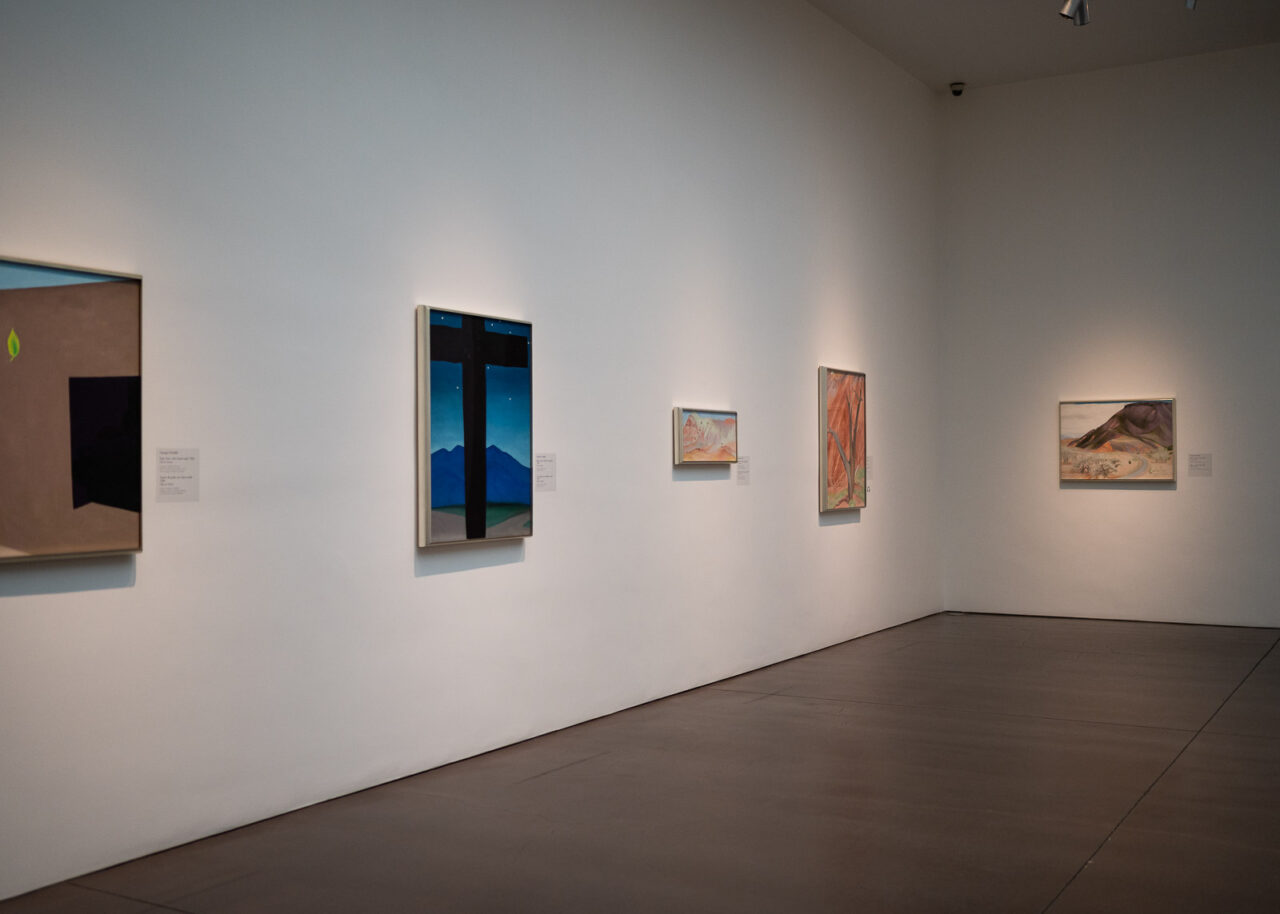
American artist Georgia O’Keeffe made many trips to New Mexico and eventually made the state her home in 1949. Many of her paintings were inspired by the New Mexico landscape and today you can see displays of her work in the Georgia O’Keeffe Museum in Santa Fe.
She maintained two homes in Northern New Mexico – one in the village of Abiquiú and a second that sits on the edge of a 21,000-acre property called Ghost Ranch. Today visitors can
Meow Wolf
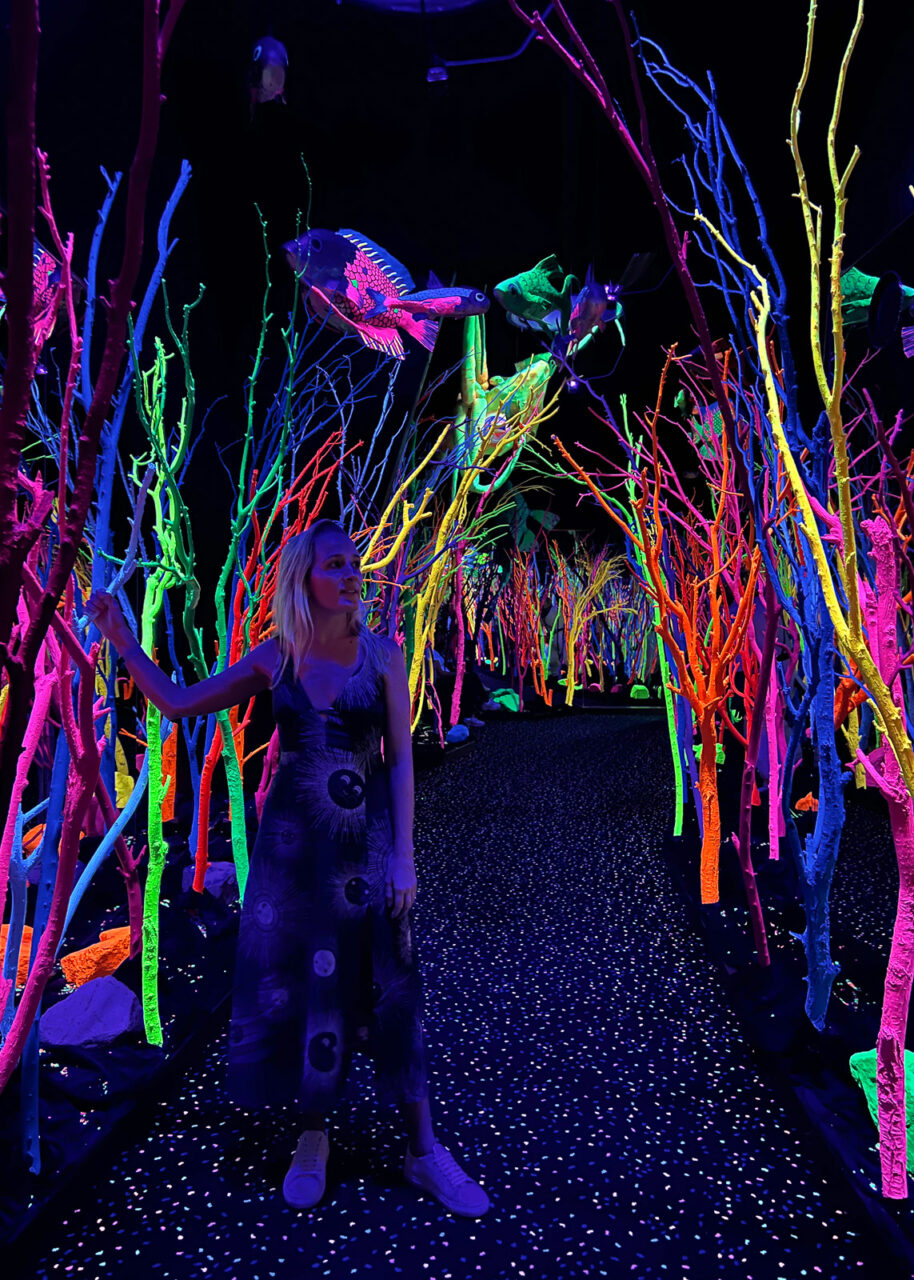
Meow Wolf is an immersive art experience with installations in Santa Fe, Las Vegas and Denver. It all started in 2008 in Santa Fe, New Mexico, as an informal DIY collective of local painters, architects, sculptors, performers and writers.
The House of Eternal Return is housed in a former abandoned bowling alley and takes visitors through a family home leading to over 70 rooms of immersive, interactive art. Step through the refrigerator or the fireplace and you’ll be led to another dimension that feels like something out of a science fiction novel. It’s quite the experience and definitely a unique thing to do if you’re visiting Santa Fe!
Adobe Buildings
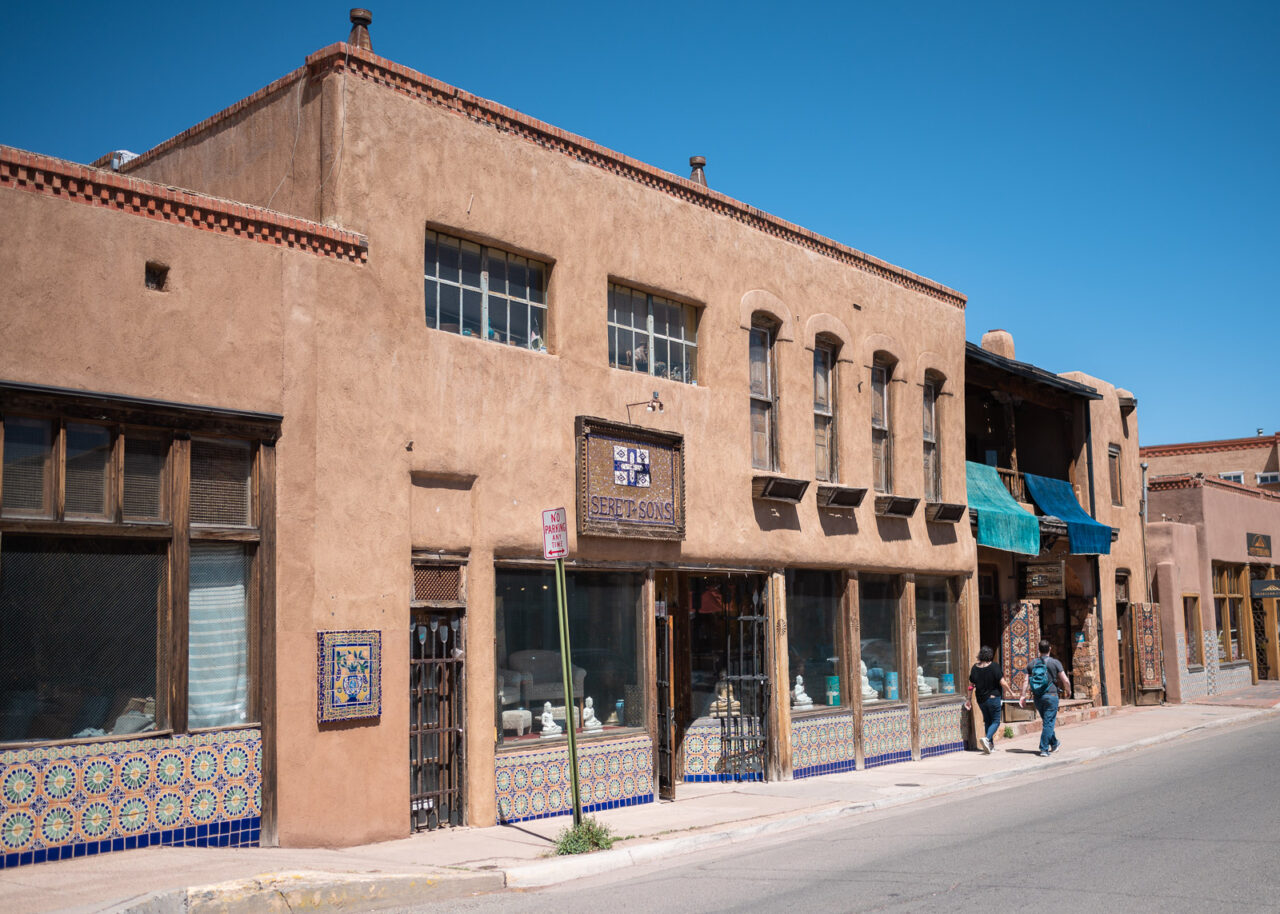
The word “adobe” comes from the Spanish for “mud brick” and is a type of building material made from soil, water and organic matter such as straw.
Adobe is one of the earliest building materials in human history and is common in towns throughout New Mexico. It was used among the indigenous American people for thousands of years and new techniques were brought over from northern Africa and southern Spain during the 17th-century.
Today many restaurants, galleries, hotels and stores are housed inside adobe buildings. You can also see examples of adobe architecture across the state’s churches and historic sites.
Turquoise Trail
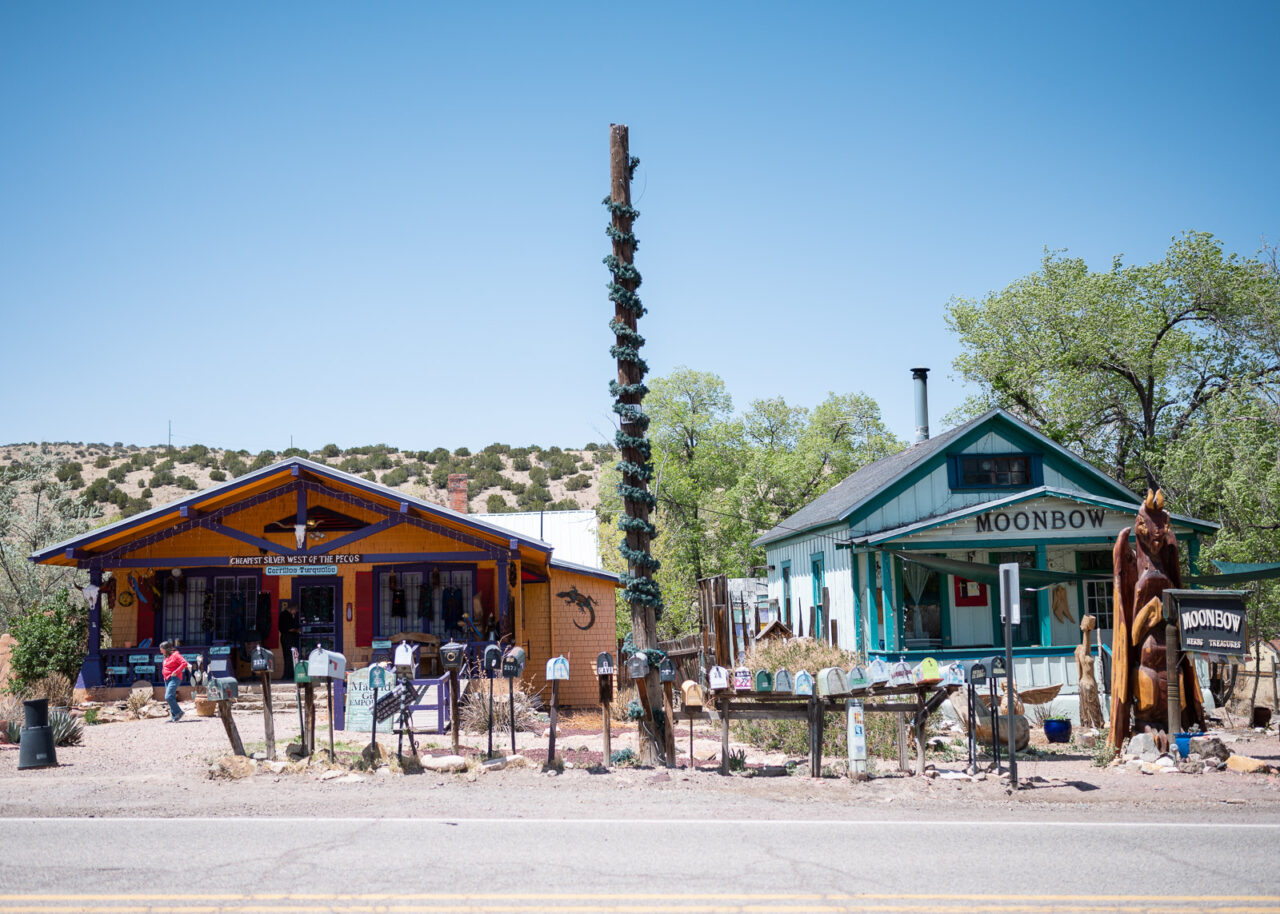
A fun thing to do in New Mexico is drive the Turquoise Trail National Scenic Byway, which lies between Albuquerque and Santa Fe. The drive is approximately 50 miles along Highway 14 and takes you through historic mining towns of Golden, Madrid, and Cerrillos.
Definitely pay a stop in Madrid – a former coal mining town that supplied coal for the Santa Fe Railroad, local consumers and the US Government. It became a ghost town after the coal mining industry fell into decline, but today boasts various cafes, shops and galleries. The houses lining the roadside are incredibly colorful and quirky, and some have art installations out front.
Albuquerque International Balloon Fiesta
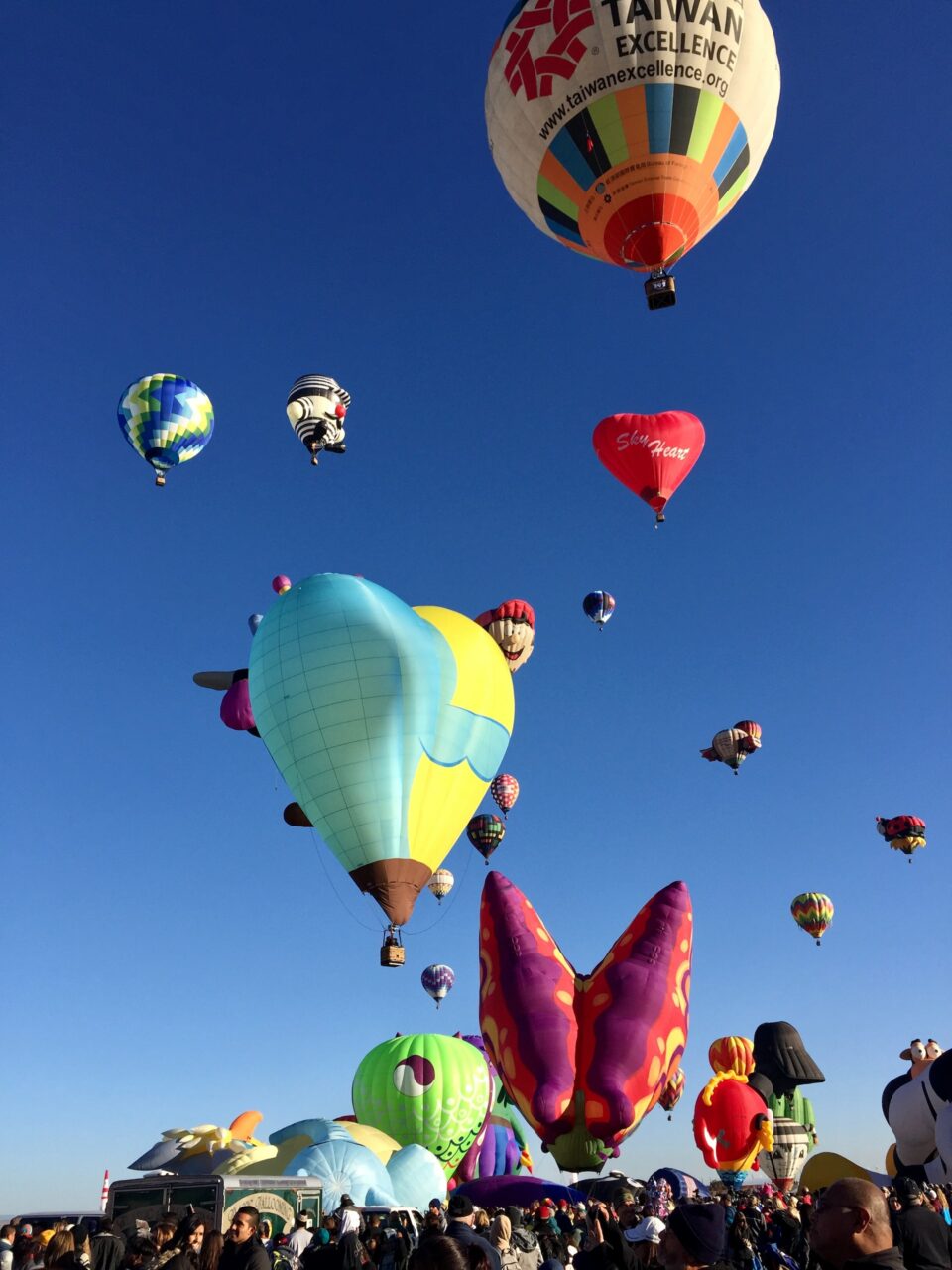
New Mexico’s most famous annual event is the Albuquerque International Balloon Fiesta, which takes place every October.
Over a period of 9 days, hundreds of colorful hot air balloons take to the skies as part of the world’s largest balloon festival. On mass ascension days, balloons are launched from Balloon Fiesta Park in two waves, starting from 7am.
There are also “special shape rodeos”, which involve a variety of special shaped balloons, and “Balloon Glow” evenings, when hundreds of balloons stay grounded on the field and light up the night sky.
Blue Corn
Blue corn is a native staple in New Mexico and can be found in all sorts of foods, including atole (a sweetened hot beverage), blue corn tortillas, blue corn pancakes and blue corn breakfast porridge.
It was first developed by the Hopi tribe in Arizona, along with the Pueblo Indians of the Rio Grande in New Mexico, and several Southeastern Tribes. Blue corn is floury with about 30% more protein compared to white or yellow corn and has a lower glycemic index.
Red and Green Chile
Chiles are everywhere in New Mexico. In addition to ristras hanging all over town, you’ll also find that food dishes are served with sauces made from red or green chiles. If you can’t decide between red or green, just ask for “Christmas” and you’ll get both!
The difference between red and green chiles is freshness. Chiles usually start out green and turn red as they ripen, so green chiles are fresh, whereas red chiles are usually dried out in the sun on ristras. Both make delicious sauces and can be poured over your chile rellenos or enchiladas.
First Atomic Bomb
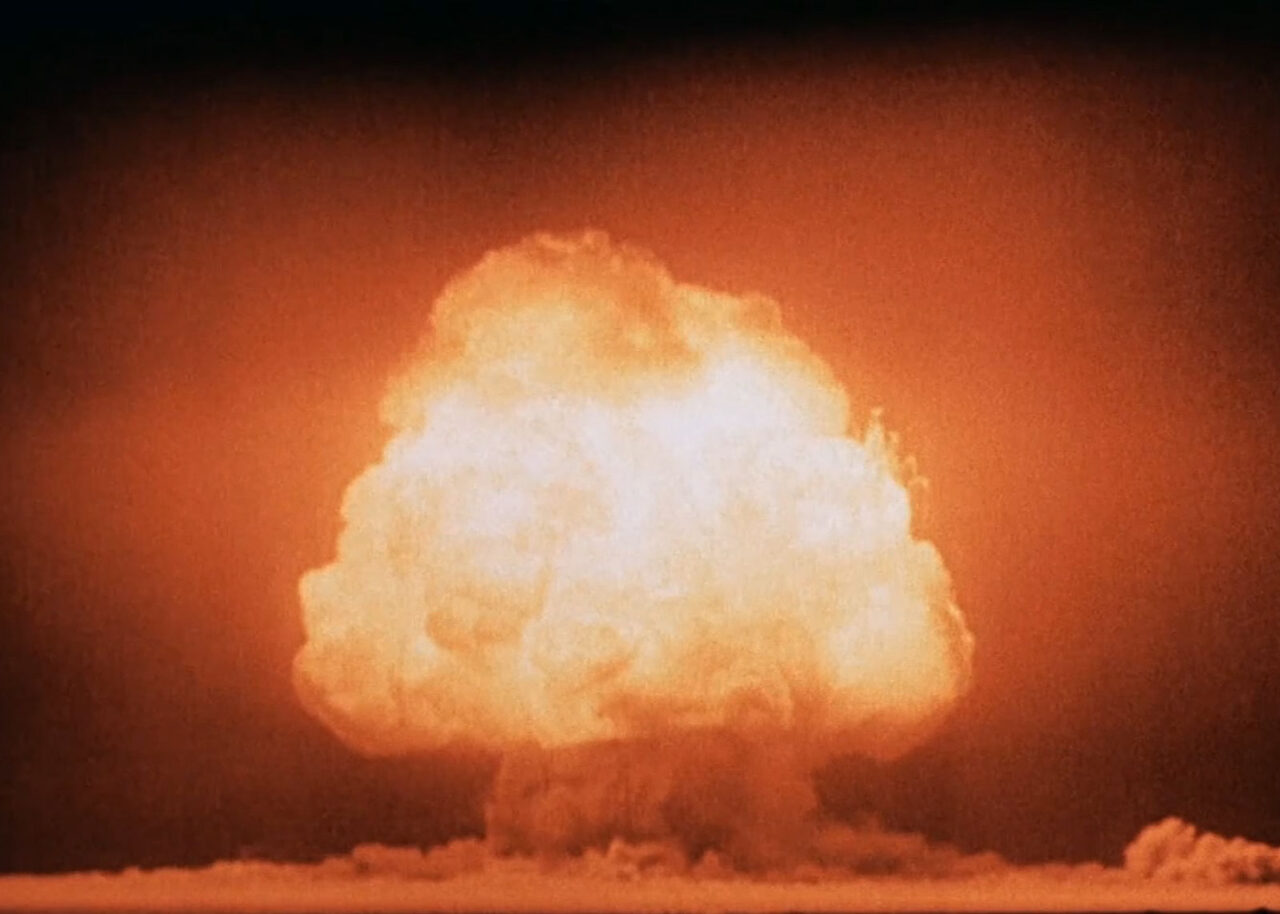
New Mexico is known for being the testing site of the first atomic bomb, which took place on July 16th, 1945. The test, which was codenamed “Trinity”, involved the detonation of a plutonium implosion device at a site in the Jornada del Muerto desert about 35 miles (56 km) southeast of Socorro, New Mexico.
The total yield of the explosion was 21 kilotons, (more than 1.5 times larger than the Hiroshima bomb) and the light was so bright it could be seen from as far as 280 miles from the test site.
In 1965 the test site was declared a National Historic Landmark and in 1966 it was listed on the National Register of Historic Places. Unfortunately numerous New Mexico residents eventually fell ill with cancers caused by the snow-like ash and radioactive fallout from the nuclear blast – you can read some of their stories here.
Roswell Incident
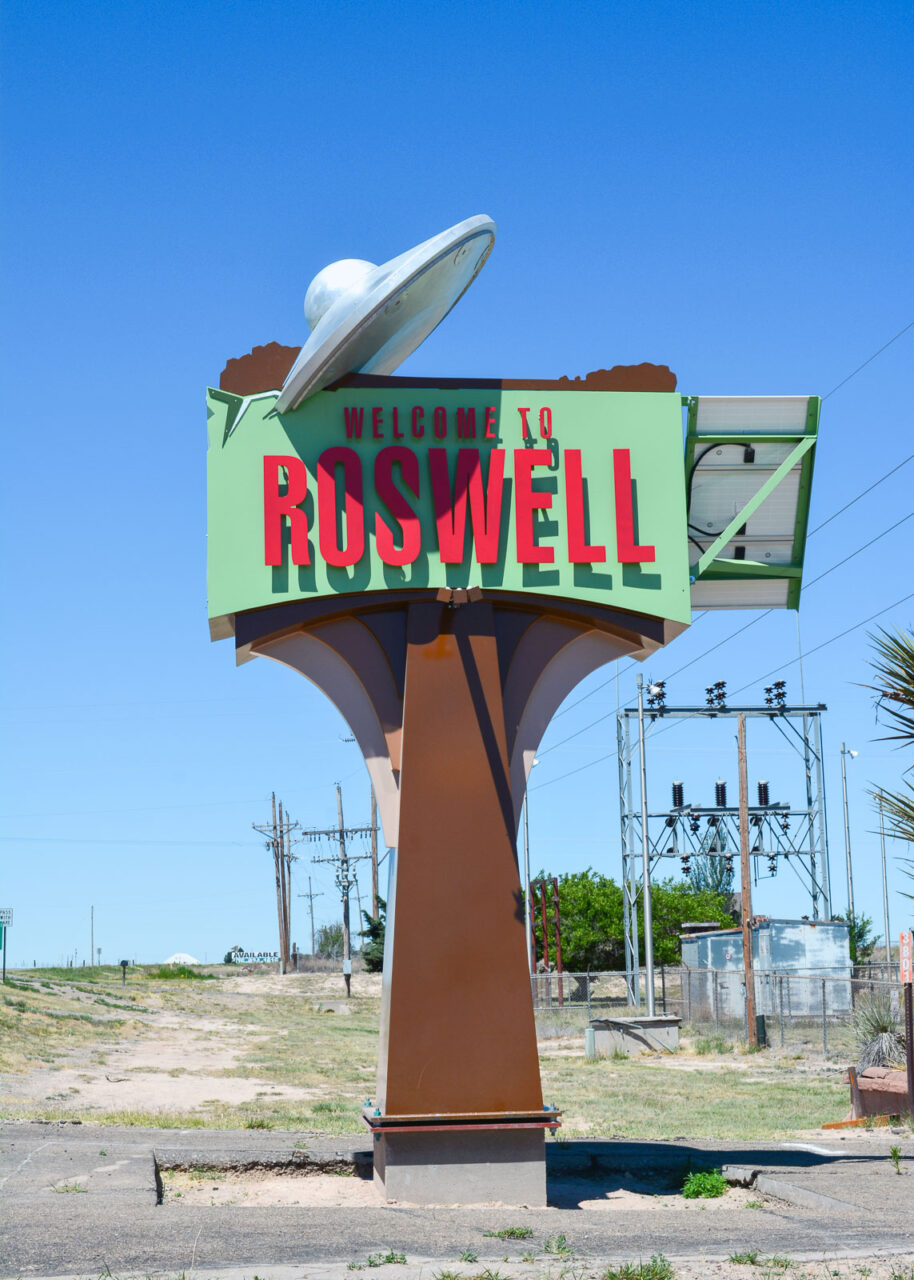
In the summer of 1947 a rancher called W.W. “Mac” Brazel found a wreckage of rubber and metallic debris on his property in Lincoln County, New Mexico. After numerous UFO sightings in the press that year, Brazel believed it to be the wreckage of a flying saucer and the Roswell Army Air Field (RAAF) released a statement that they had recovered a flying disc.
U.S. Army officials quickly reversed the claim, stating that it was actually the debris from a weather balloon. The government’s change of story led to many conspiracy theories surrounding what really happened at Roswell.
Today the town of Roswell is home to numerous UFO themed attractions, including the International UFO Museum & Research Center and a Flying Saucer McDonalds.
Carlsbad Caverns National Park
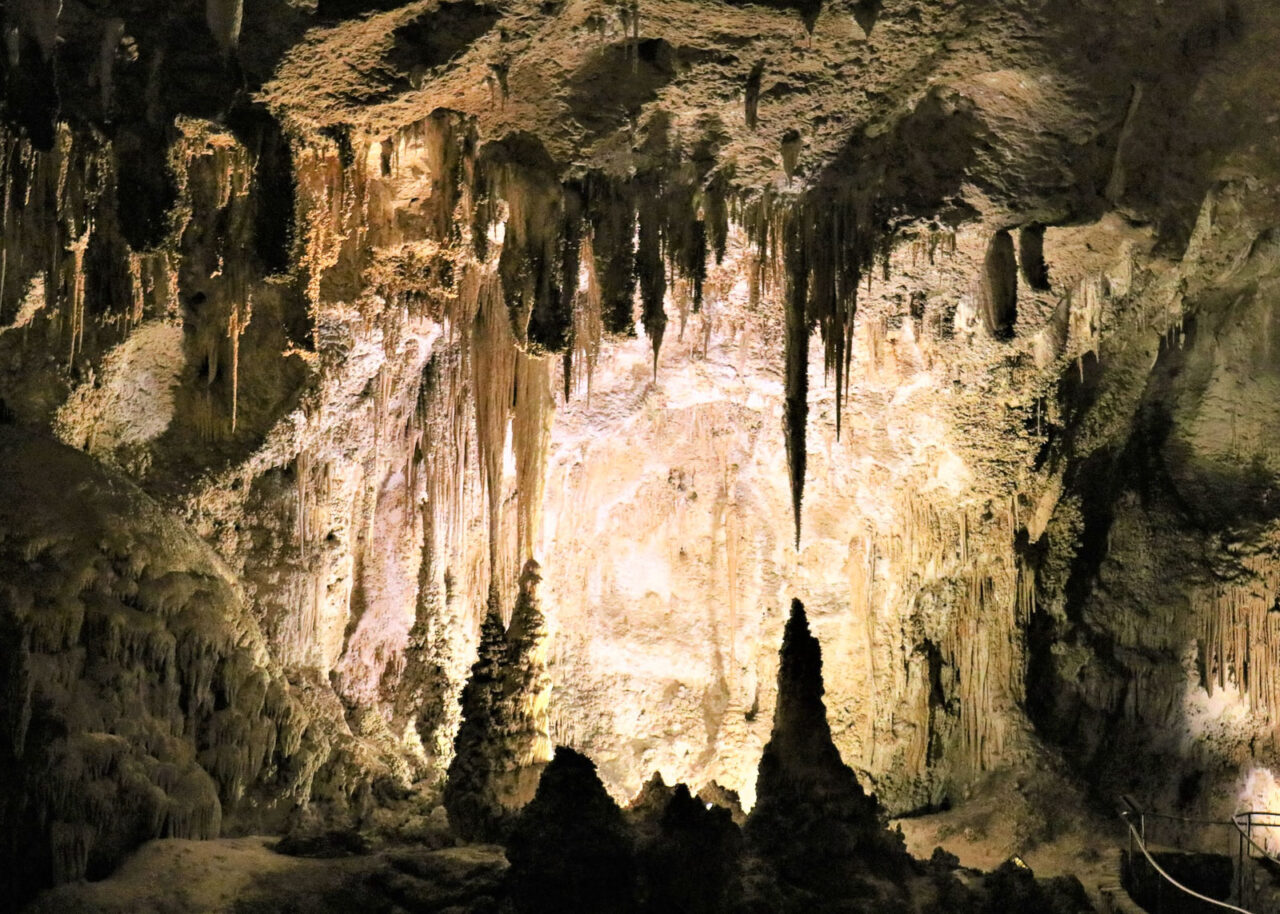
Carlsbad Caverns National Park can be found in the Chihuahuan Desert of southern New Mexico and features over 119 caves filled with stalagmites and stalactites.
Visitors can book ranger-guided tours or explore the cave system on their own via two trails – the Big Room Trail and the Nature Entrance Trail. The 1.25 mile (2km) Big Room Trail takes visitors through the largest single cave chamber (by volume) in North America, while the Nature Entrance Trail is a steep trail that is the equivalent of descending/ascending a 75-story building.
White Sands National Park
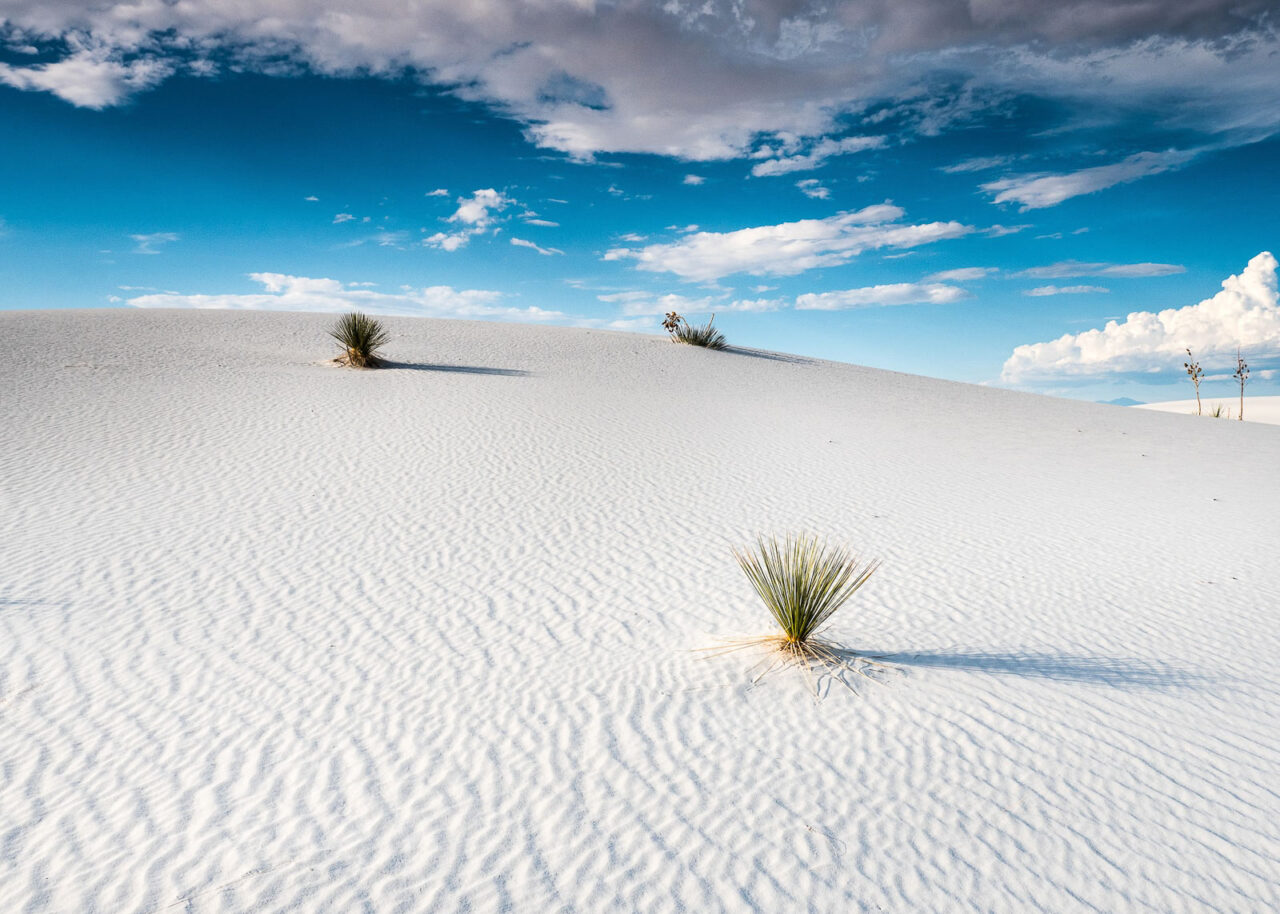
New Mexico is home to the world’s largest gypsum dunefield, which covers an area of around 275 square miles in the heart of the Tularosa Basin. These glistening white sand dunes are spectacular to look at and are a dream come true for photographers.
Within the park there are multiple outdoor activities you can enjoy, including horseback riding, biking, hiking, picnicking and sledding down the dunes. If you’d prefer to explore the sands on four wheels, you can drive a scenic 16-mile (26 km) round-trip loop that takes around 45 minutes.
Rio Grande
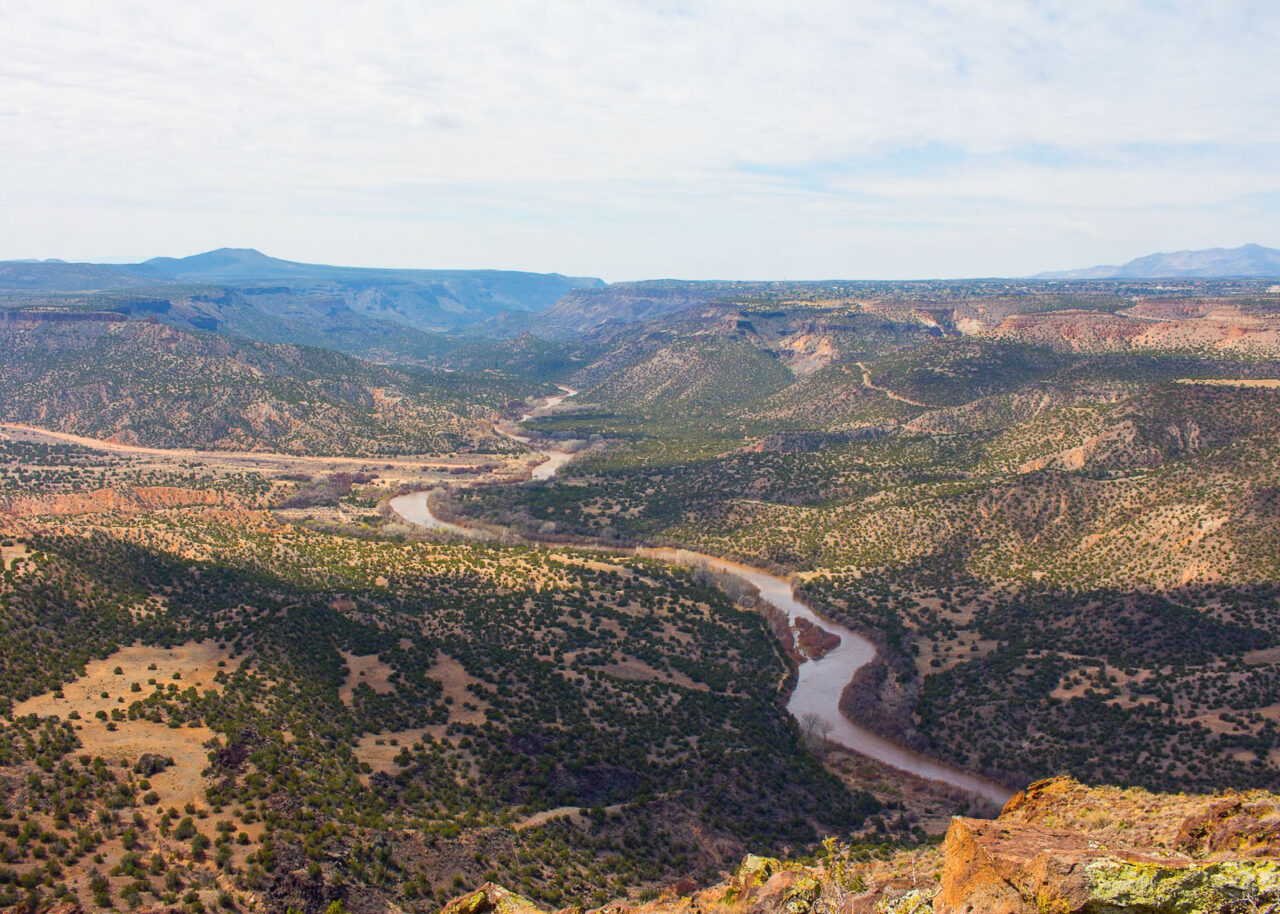
The Rio Grande river originates from the Rocky Mountains in Colorado and travels 1,900 miles through rugged scenery all the way to the Gulf of Mexico.
It cuts through an 800-foot-deep gorge called the Rio Grande Gorge, and has been a base for human activity since prehistoric times. The river and its surrounding areas are home to numerous species of wildlife, such as river otters, bighorn sheep and the Río Grande cutthroat trout.
Bandelier National Monument
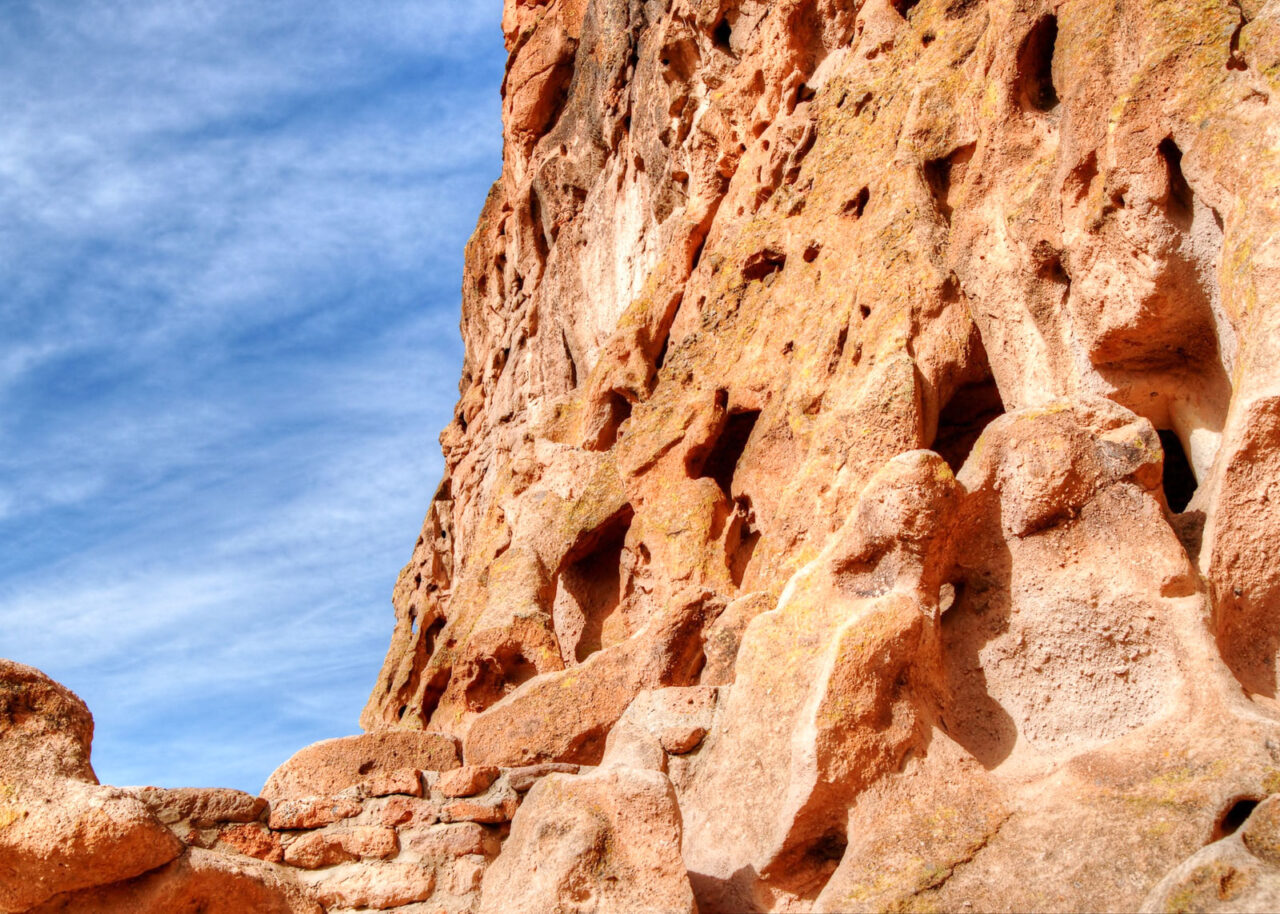
Around 44 miles northwest of Santa Fe lies Bandelier National Monument, a protected area covering around 33,000 acres of rugged canyon and mesa country. There’s evidence of human presence here dating back over 11,000 years, including petroglyphs and dwellings carved into the soft rock cliffs.
Bandelier is especially popular for hiking, with over 70 miles of trails to discover. The Main (Pueblo) Loop Trail and Alcove House Trail are the most popular hikes and can be accessed via the visitor center in Frijoles Canyon.
Cowboy Culture
In the early to mid 1800s the Western Expansion movement was underway in America, with the movement of settlers into the American West. A lot of the land in New Mexico was up for grabs and pioneers wanted to claim it for raising livestock and homesteading.
Since there was no real law enforcement or military presence, people scrapped and fought over who would claim the land. The arrival of the railroad, starting in the 1880s, brought an increase in trade and population, yet there was still no proper law enforcement. This period saw the rise of tough frontiersmen and outlaws such as Kit Carson and William “Billy the Kid” Bonney, who is buried in Fort Sumner, New Mexico.
Today New Mexico celebrates its Wild West cowboy culture at the annual State Fair, with rodeo action, bull riding, horse barrel racing, livestock competitions and exhibits. If you want to take home a souvenir, there are plenty of stores selling cowboy boots, hats and fringed jackets.
New Mexico Wine
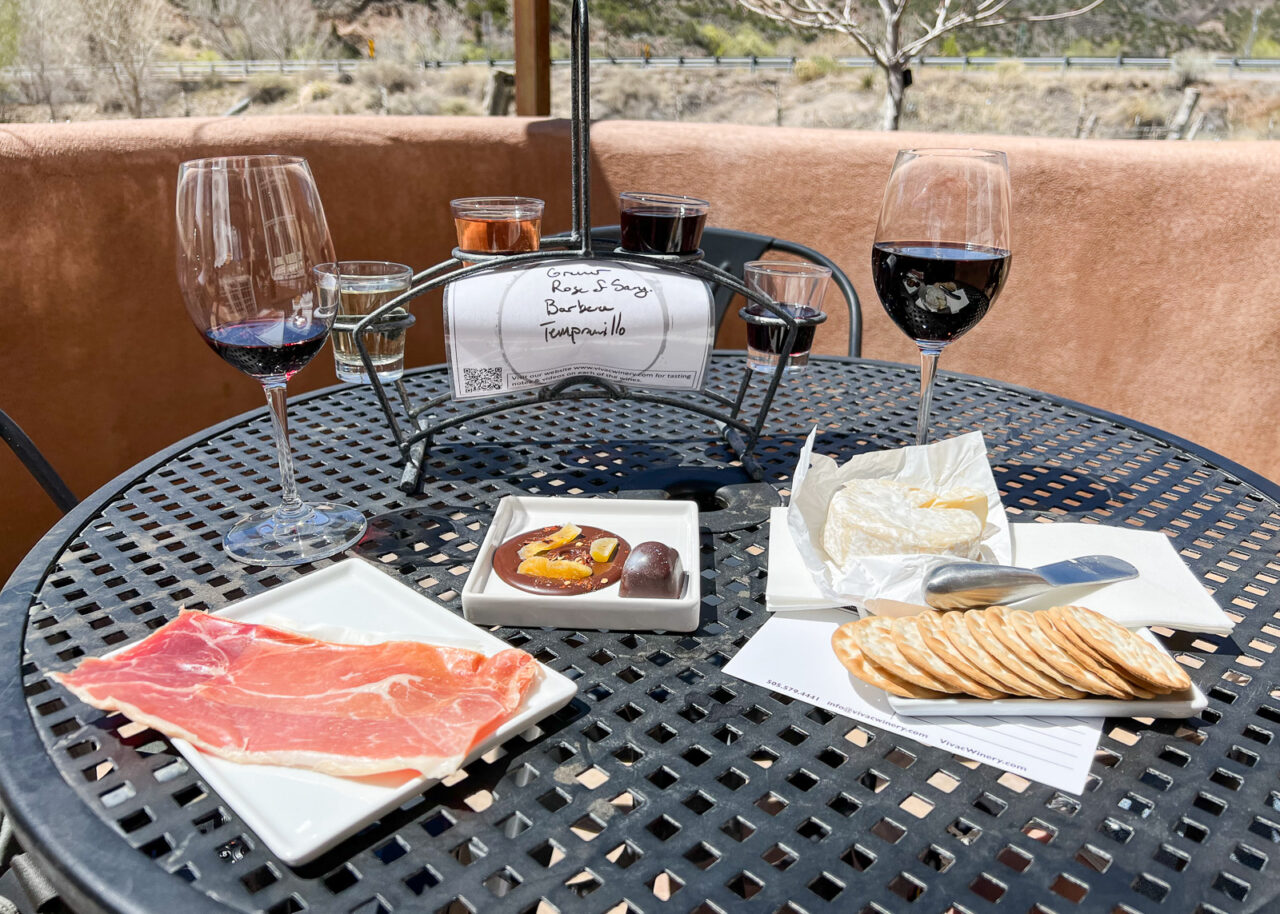
New Mexico has been producing wine since the beginning of the 17th century, when the very first grapes were smuggled in from Spain and planted on the banks of the Rio Grande. The vines were originally planted by monks to be used for religious ceremonies but eventually winemaking grew into a thriving industry. Today there are over 50 wineries and tasting rooms throughout New Mexico, so if you enjoy your wine, you might want to consider taking a little road trip.
A Final Word…
As you can see from the list above, New Mexico is famous for lots of things and is one of the most fascinating places to visit in the United States. To explore the state yourself, I’d suggest flying into Albuquerque International Sunport and then renting a car so you can explore different towns and national parks.
[ad_2]
Source link


